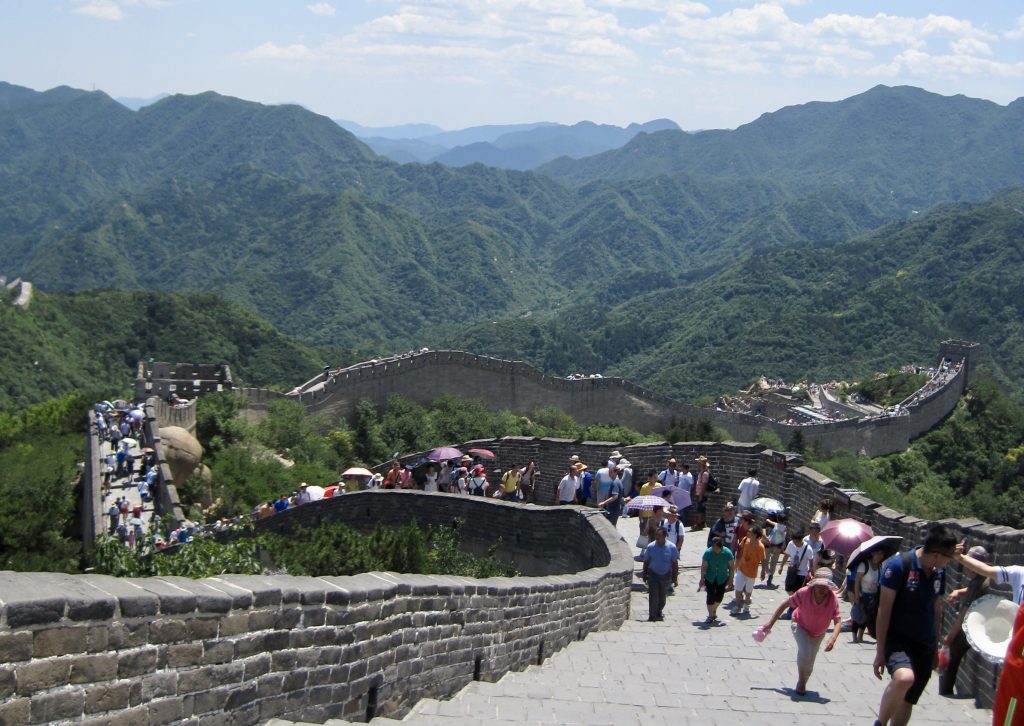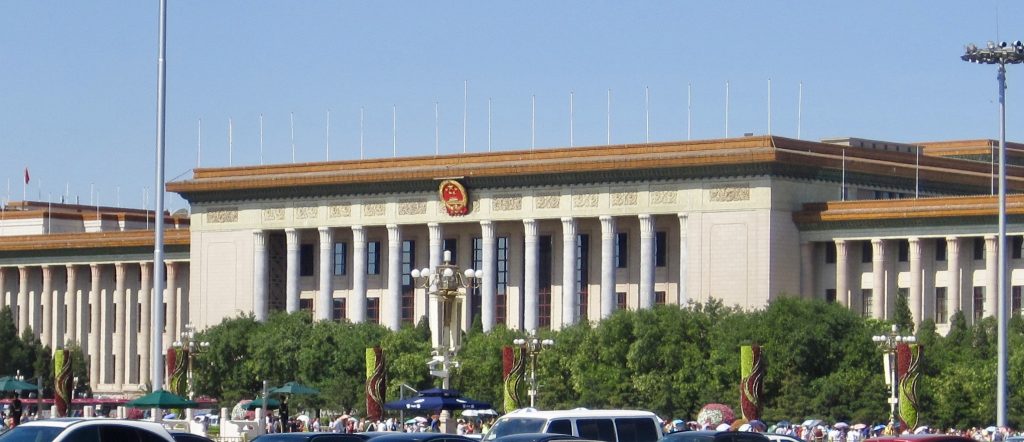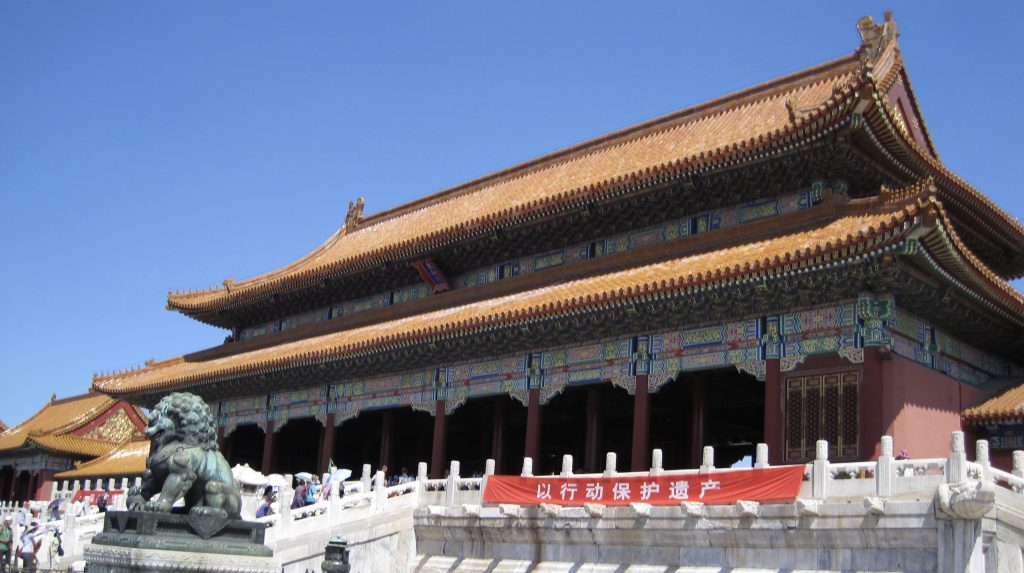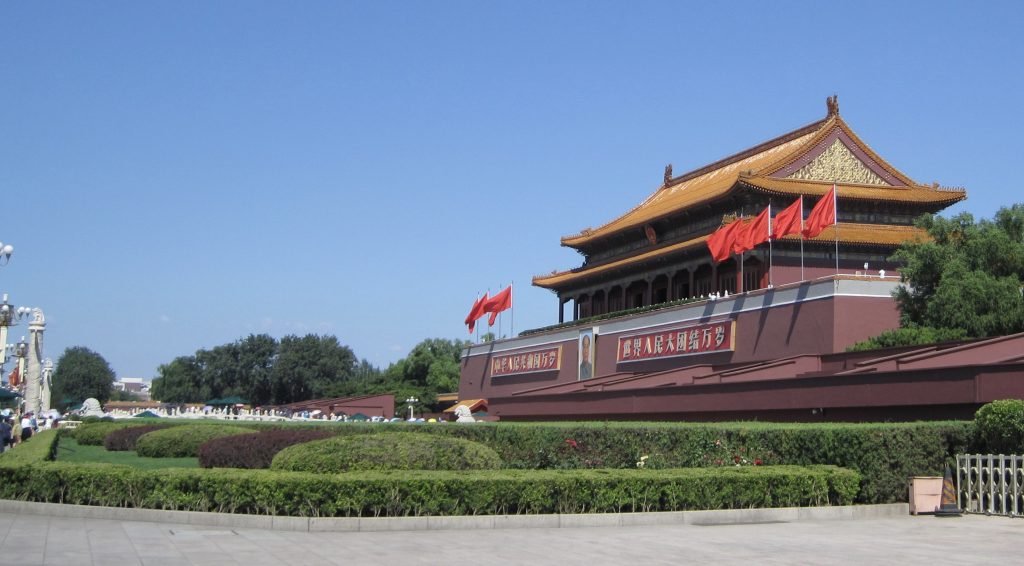Introduction
The best preserved (or perhaps most rebuilt, depending on your point of view…) section of the wall, Badaling is particularly popular with local tour groups. Although it can be very busy at weekends and national holidays, it is a good option for first-time DIY travellers due to the convenient public transport links and relative lack of steep climbs along the route.
Badaling Great Wall was built during the Ming Dynasty (1368 – 1644) to (unsuccessfully) protect Beijing against invading Mongolians from the north. It contains 30 watchtowers (19 open to the public) along its length, each with features such as arrow slits and fire beacons. The top of the wall is notably wide, designed for ten soldiers marching abreast. Although it looks like solid stone from outside, actually underneath the main body of the wall is made from mud and rocks, with the stones and bricks simply providing the outer structure.
Don’t miss
Southern Section
The northern section of the wall is more popular with tourists, due to its pretty mountainous scenery, cable car and roller coaster track. However, you can escape the worst of the crowds by visiting the southern section instead. You can start at either the usual watchtower 1, or take the cable car from near the Zhan Tianyou Memorial Hall and Badaling Railway Station to south watchtower 4.
Watchtowers
Spread roughly evenly along the length of the Great Wall, these watchtowers were used as living quarters for patrolling soldiers, convenient storage huts, and of course as strategic viewpoints to spot and shoot at invaders. You can walk through and even climb up to higher floors of most of the watchtowers to get spectacular views over the valley. Look out for the many arrow slits and viewing holes.
Pass City
The main entrance to Badaling Great Wall, the pass city is surrounded on all sides by the wall and was a key defensive position. Two gates, on the eastern and western sides, allow visitors to enter under the watchful eyes of soldiers in the surrounding watchtowers. Inside, you can admire five ancient cannons and begin your accent to the wall.
Hike to the Wall
Get to the wall the way the warriors did – by your own two feet. The path from the ticket office up to the wall is well paved with steps and handrails. You can chose to join the wall at watchtower 1 or continue walking through the forest as far as watchtowers 3 (South), 6 or 12 (North), from where you can walk along the wall back down. The later parts of the walk pass through beautiful woodland, although the path does turn into more of a mud track after a while. We recommend joining the wall at watchtower 1, walking North to north watchtower 6, then taking the woodland path back down.
Roller Coaster
Take a roller coaster from the north watchtower 4 back down for only 30 RMB. Note, despite its name it’s more of a slow ride, and sadly doesn’t offer much in the way of views due to the blue canopy.
Beware the long queues – it’s best to visit on a weekday or early morning if you plan to do this activity.
Cable Car
Ideal for older travellers or those travelling with kids, the cable car is a more accessible route up to the great wall from the ticket office. You can enjoy the beautiful scenery from above, with views across the treetops. It costs 80 RMB one way or 100 RMB return. We advise taking the north cable car up to north watch tower 8, then walking down to watchtower 1 (the walking entrance/ exit).
Great Wall Museum
Located at the base of the cable car near the Pass City, this small museum has some interesting artefacts from the area around the Great Wall. It was opened in 1994 and contains nine exhibition halls with everything from unearthed artefacts to photos of the restoration.
Zhan Tianyou Memorial Hall
Located near the Badaling Railway Station, this memorial hall commemorates Zhan Tianyou, a famous Chinese railway engineer. If you’re passionate about trains or engineering history, this branch of the Chinese Railway Museum is definitely worth a visit.
There are over 2000 exhibits relating to his personal achievements, including pictures, models and videos. They are split across three halls – the “seeking knowledge hall” (about his personal life), “serving the country hall” (about his career building the Beijing-Zhangziakou railroad, the first in China, and subsequent technological advancements), and the “cherishing hall” (about his lasting impact and ongoing celebrations of his life).
Practical info
Tickets: 40 RMB.
Opening hours: 7:00 – 18:00 (winter), 6:30 – 19:00 (summer).
Recommended visit: 3 hours.
Transport:
By Bus: take metro line 2 to Jishuitan (积水潭), leave via exit A, walk east for 450m towards the Deshengmen arrow tower, enter the Deshengmen (德胜门站) Bus Station below the tower and take bus 877 (12 RMB) to the Great Wall. Buses run from 6:00 – 12:30 (summer)/ 6:30 – 12:30 (winter) to the wall and 11:00 – 17:00 (summer)/ 11:00 – 16:30 (winter) back.
By train: take metro line 8/13 to Huoying Station (霍营站 – exit G4). Walk 100m southeast to Huangtudian Railway Station (黄土店站), from where you can take train S2 (you can pay by Beijing transport card to avoid queuing, 7 RMB) to Badaling (八达岭). From there, take the free shuttle bus (summer only – stop 1 for watchtower 1, stop 2 for the cable car) or 15 minute walk to the Great Wall.
Warning: watch out for fake buses also numbered 877, only take one from the official parking area. Expect reasonable queues for the genuine bus and the ability to pay by public transport card.
Top tips: bring plenty of water and a packed lunch, as there are very few opportunities to purchase these on the wall.
Nearby

Badaling Great Wall 八达岭长城
Badaling Great Wall 八达岭长城
Summer Palace 颐和园
National Museum of China 中国国家博物馆

Great Hall of the People 人民大会堂
Great Hall of the People 人民大会堂

Forbidden City 故宫
Forbidden City 故宫

Tiananmen Square 天安门
Tiananmen Square 天安门



0 Comments